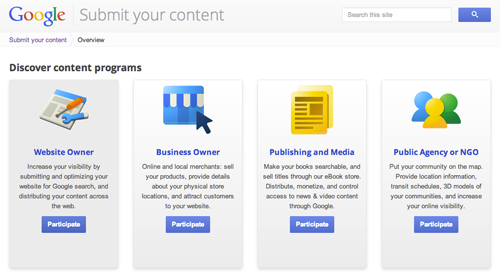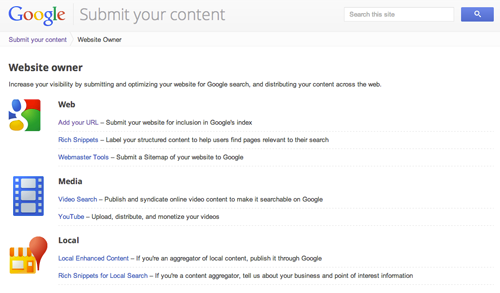- Share Content Curation & SEO: Do’s and Don’ts on Facebook
- Share Content Curation & SEO: Do’s and Don’ts on Twitter
- Share Content Curation & SEO: Do’s and Don’ts on Linkedin
- Share Content Curation & SEO: Do’s and Don’ts via email
Content curation is the practice of finding, organizing, annotating and sharing the best and most relevant third-party content for your audience. There’s no doubt curation has become an integral part of today’s content marketing. The number of concerns surrounding the practice however, have created doubt in the minds of some content marketers before they understand the benefits of curation done right.
Curation Pros and Con(cern)s
Pros: Content curation allows marketers to publish fresh, relevant content at a higher volume than a 100 percent content creation strategy allows. The variety of insights content marketers can publish offers readers more diverse perspectives from their peers and other third-party sources. This makes your content more credible by positioning your organization as an objective, go-to resource. Not to mention it saves marketers time and money, and avoids burning out staff.
Concerns: Some marketers may be concerned that content curation means duplicate content, which may hurt search engine optimization (SEO). If content is duplicated, it would compete for search rankings. There’s also concern regarding whether content curation involves too much outbound linking, sending readers away from your site. When done right, however, outbound links and curated content can actually improve SEO.
Here are some do’s and don’ts for effective content curation SEO.
Content Curation SEO Do’s:
Do: Curate for your audience, not for search engine bots
A great marketer knows to always keep your target audience top of mind. Always. If people like your content, they will link back to you as an industry resource, helping your search engine ranking in the process. It’s far more effective than trying to game the system. As Google’s Matt Cutts says, “Good quality trumps SEO.”
Do: Be selective about your content
Make sure it consistently provides the most value possible for readers. Content you curate should be highly relevant to your topic, provide more perspectives for your audience, and be annotated with your own insights and opinions in order to increase its value. Share curated content on multiple channels (newsletters, social media, blogs, etc.) to ensure it reaches a wide audience and gains as much exposure as possible. The more popular your content is, the more likely it’ll show up in search results.
Do: Add your feeds to Google Blog Search index
If you submit your RSS feeds to Google Blog Search, Google will consider you a more credible source of information and know when you update content. Most importantly, Google will consider you as a dynamic “blog” source, rather than just a static website. This means they’ll re-crawl more often and your rankings will improve. In addition, you will not only show up in Google Search results, but Google Blog Search as well.
To do this, head over to https://www.google.com/submityourcontent/
Choose your content program:
Add your URL:
And submit your content to be indexed.
Do: Post your curated content to Google+ with backlinks
Contrary to popular belief, Google does not factor in shares on social channels such as Twitter, Facebook, or LinkedIn to their search algorithms, because they don’t have licenses to that data. On the other hand, Google does consider activity on their own social media channel, Google+, when determining ranking status.
Do: Annotate your curated posts and add your perspective
Make sure the content you’ve written is longer than the excerpt you’ve taken from the original article. With curation, it’s best practice to give more than you take for two reasons:
-
Ethics. Search engine optimization aside, you want to make sure you are ethically curating when relying on someone else’s content. For further reading, take a deep dive into the ethics of content marketing.
-
Improve SEO by avoiding duplicate content. When you annotate curated pieces with your own insights or opinions, the content you write allows search engines to pick up the piece as a separate source of information. This means you’re not just taking and reposting content from third-party sources. Annotating also provides more context and insight for readers, increasing its value.
Do: Retitle all your curated posts
New titles ensure you’re not competing with the original article in search results. The content in titles is taken into deeper consideration by search engines than body text. Use this to your benefit by including your own keywords in new titles.
Do: Prominently link back to the original article in your curated piece
From an ethical standpoint, this allows readers to easily click on the original post for the full text, and gives proper credit to the author. Outbound linking also improves SEO. Links to quality content show search engines you’re a credible source with dependable information.
Content Curation SEO Don’ts:
Don’t: Repost the full text of articles
This is not only unethical; it hurts your SEO. If you repost too much of the original article—especially without annotating, search engines won’t be able to know which content out of yours and the original to index, or which version to rank in query results. Link metrics may also either be split between pages or designated to just one of the posts. If you do this excessively, Google may consider you a spam blog or “splog” for short.
Don’t: Curate from a single source over and over
Readers, and search engines, rank variety as value. If your site/blog has outbound links to a variety of sites, Google knows your site is not just a front and that your content is credible and information packed.
Don’t: Share duplicate full size images
When curating content, be ethical by using only a thumbnail size of the original image. Best practices for search engine optimization include altering the image alt text, adjusting image size, and creating a relevant image name. These are all things Google takes into consideration when ranking images.
Alt text is how search engines understand the image. For example, when you see a picture of a cute puppy, you’re able to recognize what it is by looking at the picture. But search engines can’t do this, so they need text to recognize the image and rank it appropriately. Include the keywords you want to represent your image in the alt text. For example, <img src=”cute-puppy.jpg” alt=”Cute Puppy” /> lets search engines know what the content in the picture is, so it’s easier for users to find it in search queries.
The size of images also counts, although indirectly. Google ranks pages on how long they take to load. Large images may slow down your page speed, which can affect your search rank. That said, make sure the size and aesthetic of your images matches the look and feel you want on your page—just be sure to balance size with speed.
Naming images can also help when optimizing for search. Before uploading an image, give it a file name to match its context, as well as the content on the page. For example, if you’re curating a blog about the USA Olympic teams and you upload an image of the hockey team, name it USAOlympicHockeyTeam.jpeg. Makes sense, right? This not only helps Google understand the context of the image, but also ensures that the image is relevant to the page copy. Because Google considers the content of the page as a whole, this helps boost your rank on search.
Things to Consider
Using nofollow attributes on hyperlinks:
A nofollow is a value added to the HTML of a link that tells search engines not to consider the link when ranking it in a search index. This keeps the link juice in your curated piece and gives less SEO credit to the original source. Nofollows are unethical because they unfairly take search credit away from the original publisher. Google may also realize you’re using too many nofollows and engaging in a practice known as “link hoarding” for which you may be penalized.
Curata would only recommend using nofollows for aggregated content. Aggregated content can hurt SEO because it’s duplicative with no original added insight. Using nofollows on aggregated content on your site can tell search engines to not credit the duplicate link.
Here’s a great infographic that dives deeper into the methodology of nofollows.
Using your domain versus a subdomain:
(curata.com = domain, www.blog.curata.com = subdomain)
-
Domains: Keeping everything on your domain concentrates all inbound links in one place. This keeps everything tightly coupled to your brand and creates a base SEO for all the pages on your domain. This can help boost search results.
-
Subdomains: Perhaps your blog platform is hosted on a different server than your corporate site, but you still want to retain your corporate domain in the URL. Subdomains can also be used to categorize between different branches of your site, such as products, services or geographical regions.
-
New Domains: New domains are also another option. These are not as tightly coupled to your original domain, so you can sometimes be more credible by appearing like a third-party resource. New domains can also be used as places to establish thought leadership on a certain topic and improve SEO. Curata uses Content Curation Marketing to provide an all-encompassing resource on content curation for readers.
Check out how these companies are using curation to boost their brand; some use domains, some use subdomains. Test yourself and see if you can tell which is which.
Using share bars/iframes
-
A share bar, or iframe, is a sharing tool that often hovers over the third-party content. It typically includes your branding and a link back to your curated article. Here are some examples of share bars:
-
Pros: This can help improve the number of views on your curated content and increase your branding exposure. Share bars can capture more social media shares because they allow readers to share your curated content to their social pages with one click.
-
Cons: They can be annoying for site visitors. If you’re going to use a share bar it’s best practice to give a reader the option to close it, otherwise it can intrude on the reading experience. Share bars can also unethically steal shares and linkbacks from the original publishers. Because the share bar does not display the original article’s URL, people who cite the content often mistake the share bar URL as the proper source. This erroneously gives the curator credit instead of the original author.
Check out this article for more information on the use of share bars and iframes.
Opening Links in a New Window/Tab:
-
Pros: Readers are still on your site. Many publishers choose to have links open in a new window because they fear readers will click off on a third-party link and never return.
-
Cons: Opening links in new tabs disables the back button, making it easier for readers to forget about your page. They may still have your tab open, but they’re no longer reading your information. We all know what our tab bar starts to look like when links are opening in new tabs. It makes the bar cluttered and disorienting when trying to backtrack to past pages. Having links open in a new tab can also be annoying for readers. They have the option to open tabs in new windows if they choose to.
Topic pages
-
A topic page combines links (internal links such as blog posts AND links that are externally curated) about a single topic in one location.
-
Tagging and categorizing content for topic pages gives readers an evergreen and information rich resource. Topic pages also help improve SEO for a few reasons.
-
-
- Each topic page is focused around a specific term, so they’re keyword rich—which helps capture traffic from long tail search queries.
- Topic pages include links to all of these other indexable pages, creating higher SEO value in Google’s eyes. It’s also a different way of crosscutting your site content and creating more internal links.
- Your content is repurposed on topic pages, allowing you to get the most mileage out of it as well as reaching more readers.
-
-
Check out this topic page for Barack Obama as an example.
-
Green Data Center News, a content curation site focusing on technology and services for green IT and data centers, created a topic page on Barack Obama, linking to all the articles on their site that mention him. As a result, they’re the first search result in Google for “Barack Obama data center.” The internal linking on the page, as well as the ability to capture this long tail query, optimizes this topic page of curated articles for search.
In summary, content curation is an effective content marketing strategy to increase credibility, drive leads, and improve SEO. But you have to put the work in to curate content and not just aggregate. Annotate curated content with your own insights, change titles, link to credible articles, publish from a variety of sources, and always give more than you take when it comes to third-party content.
Need more information on content curation and how it can improve your content marketing strategy? Check out Curata’s 2016 Content Marketing Staffing and Tactics Study for information on how to improve the SEO of your content, increase leads and drive engagement.














